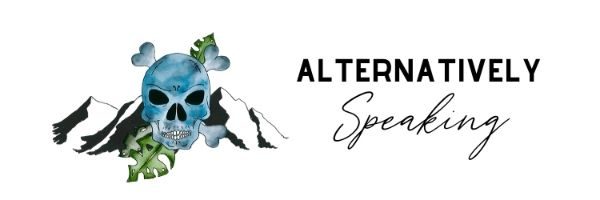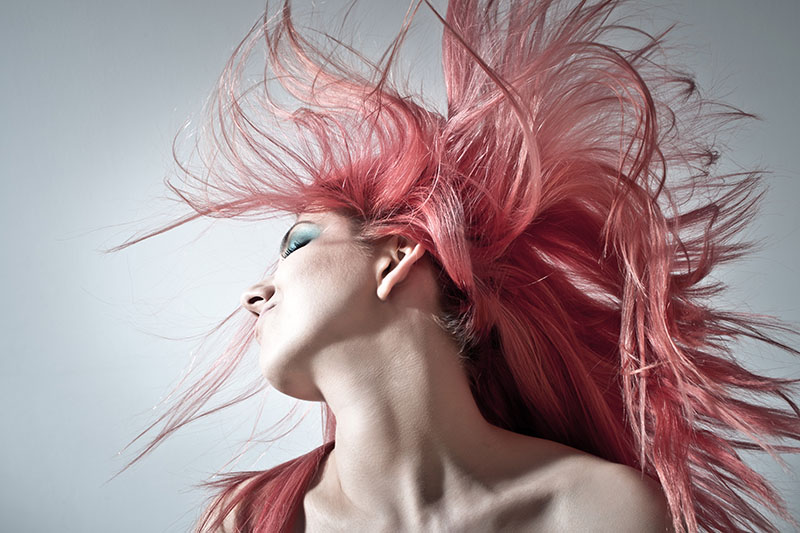Many of us who identify as hair dye addicts are guilty of what my friends affectionately refer to as my ‘mood hair.’ There are times that my hair colour changes so often that even I lose track of what colours I have recently done. However, if you are going to transition from one hair colour to another, you want to make smart choices and avoid ‘swamp green’ hair from mixing colours incorrectly!
**Disclosure: This post may contain affiliate links that earn me a small commission at no additional cost to you. I will only ever recommend products/services that I love, and feel are valuable to my community. Thank you for any and all support! For more information, please visit my Disclaimer page.**
As someone who has always done all my hair colouring at home, I can tell you that its not always as simple as just slapping some dye on your head and hoping for the best! Especially when you hit the point of moving from one bold, unnatural colour to another. There is a complete science behind colours, as any artist can attest. This applies not only to the fine arts but also to the art of hair colouring.
As I have disclosed in previous blogs, I have an addiction to Manic Panic. I have tried a few different dyes, and I just find that Manic Panic works extremely well in my hair, and it is readily available around here (check your local Shoppers, they never fail me). Other great brands that either I have tried or that good friends speak very highly of are Arctic Fox, Punky Color, Directions, Special Effects and Pravana.
Regardless of how long you allow these colours to fade out, however, your hair is likely going to retain some staining – especially if you wanted a bold colour and initially bleached down to a bright bleach blonde to start with!

So, what do you do if you’re rocking a faded out pink, or a pale purple/grey and are looking for a change of colour? That’s when the colour wheel comes into play! There are a ton of variations out there after all the colour wheel applies to everything from paint colours to graphic design, but I enjoyed the fact that How to Hair Girl included the hair colour applications on this one!
Rule of thumb – you want to avoid bleaching your hair multiple times at every chance possible! This means, if your hair has already been bleached to put the initial colour in, I recommend that you opt to find options that don’t require bleaching it again. Bleaching your hair too often is going to cause serious breakage, and you’ll have no recourse except for a hair cut to cut it all off!
Also, remember: Conditioner is your friend! Conditioning treatments will help your hair to regain some of its strength and health. Personally, I even switched to a co-washing regiment which has helped immensely with my hair’s health.
Table of Contents
#1. The Adjacent Colour
If you are making a move to a colour on the colour wheel that is found next to your current colour (for example, green to blue or red to purple), good news! Your task is super easy! Due to their relationship on the colour wheel, in most cases, you can simply apply the new dye on top of your faded old dye. Wash your hair with a good clarifying shampoo, which will prepare your hair to best accept the dye, and go for it! The end result will, in most cases, look the same as if you had bleached your hair, but with less damage! **The exception to this statement would be if you are looking to go with a lighter new colour – a pastel is not going to cover a darker faded dye. Use your own discretion as to when this will and will not apply.
#2. The ‘Near-Neighbours’
If you are looking for a slightly bigger change, but not necessarily jumping to the other side of the colour wheel, such as purple to orange, you can get away with the use of fading treatments or a colour corrector rather than having to full-blown bleach your hair. The best option, from my experience, is a technique known as Katie’s Direct Dye Fading Treatment (or KFT). You can find the details about that HERE. A good colour corrector is going to be less harsh and damaging for your hair, as it doesn’t lift as much colour, but still do enough of a job to allow you to make your transition. Make sure you are purchasing the correct colour corrector for your current dye. While some colour correctors are formulated for direct dyes, others are not. Once again, as stated above, if you are moving to a pastel colour it will obviously change the rules slightly…
 #3. Colour Opposites
#3. Colour Opposites
If this is your goal, be prepared that you may not be able to make the drastic change all in one step if you want to maintain healthy hair! If it is at all feasible, I recommend choosing a colour between the two so that you can follow the instructions of the ‘near-neighbours’ and then make your final move 2-3 months later. This step-by-step approach is going to be FAR easier on your hair!
If you are unable for whatever reason, or unwilling, to take the steps, then be prepared for multiple test strands, a longer list of products and ALWAYS have a phone number for your stylist on hand just in case (or better yet, just go see them and skip the at-home treatment for this option!).
Before you can start changing colours, you will need to fade down your current colour. Bleaching semi-permanent hair dye can actually cause your hair to stain. You want to get as much dye out of your hair as possible before moving on to the next step.
You will need to bleach down your hair enough for it to take the new colour properly. This may require the use of toners, as some colours are going to bleach out funny, or brassy, not giving you the proper base for your new colour. NEVER bleach multiple times in a row! If you find that one bleach treatment isn’t enough, it is imperative that you give your hair a break before going at it again!
As both Arctic Fox and Manic Panic work in a conditioning manner, I have used them in the past to help me with the transition. For example, when I decided to go from black to brighter colours. The first bleaching left an almost orangey brown colour in my hair, and I had NO interest in rocking that for a few weeks. In this case, I threw a colour in my hair that fit on the colour wheel (I chose green, a ‘near neighbour’ to the orange) until such time that the green faded out naturally on its own, and I was able to do the next bleaching step.
TEST STRIPS ARE YOUR FRIEND!!!!
Any time that you are changing your hair colour, and therefore experimenting with how your hair is going to react to the change, or opting for any type of new dye or treatment, take the time to do a test strip!
If you complete a small test strip and aren’t happy with the results, be happy with the fact it’s only a test strip, and return to your colour wheel to reassess your plans! It is much easier to hide a small test strip then your whole head if your first plan goes south!!!
Most importantly: Have fun! Hair colours can be changed, and hair grows back! This is such a fun way to express yourself!
What is your favourite hair colour that you have ever rocked? If you could change your hair colour right now, with no effort, and it was guaranteed to work and look GREAT on you, what colour would you go?


 #3. Colour Opposites
#3. Colour Opposites
Great post. I haven’t dyed my hair for a while and getting bored now. This has helped ?
My blue has faded right out to a pink right now haha – so I am deciding what to do next… currently waivering with my well known blue, or maybe going with a bright red for awhile. The pink colour it has faded down to would let me make the switch right now problem free… Decisions, decisions!
Thanks for reading!
Loved reading this post! I haven’t had my purple hair for a while but am thinking of going back. I wanted to let you know about Over Tone. They’re color conditioning products that renew what you lose when you wash 🙂
I have heard about the Over Tone products but never tried them. I currently add some of my dye to my own conditioner for the same effect. Thanks for reading!
I love manic panic! When I was in my colorful hair phase I loved this brand. It’s not too expensive and the colors are so vibrant
Thanks for reading! I am addicted to the Manic Panic products, plus they are so gentle on your hair compared to a lot of other products! What’s not to love?
I’ve never dyed my hair; I may when I go grey, but I love my natural red locks! Nevertheless, I LOVE this post. You’ve really turned these awesome pops of color into an art form!
Amber || mylifeinlimbo.com
Thank you! I started dying my hair at a young age and I’ve been addicted ever since – much like my tattoos and clothing, it has become a way of expressing myself!
I’ve never dyed my hair, I’ve wanted t o just never did it. You look really good with green hair. Is there any color you wouldn’t dye your hair?
Hmm that’s a good question… I think given the right circumstances I’d do nearly anything, but I don’t see myself hopping on the silver/grey trend anytime soon. Thanks for reading!
I wish that there had been this kind of post and info out there 30 years ago when I was changing my hair colour at Uni. However, there was only a limited range of colours out there too. I would have loved to go blue and may have been tempted seeing as I went a deep purple and it would have been easy. Great post!
The products available today are incredible compared to the options I had in high school and university! I love all the options that are available today